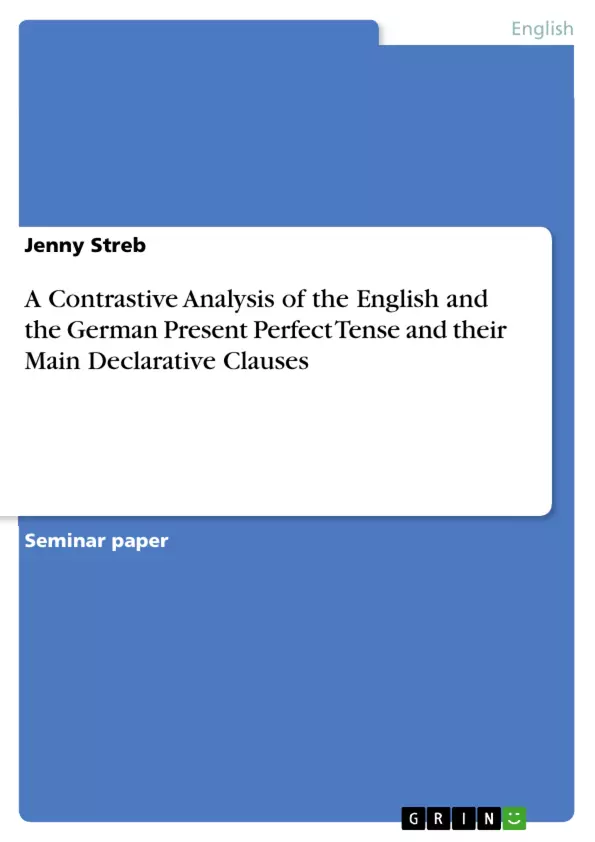This paper is going to provide an insight into contrasts between the English and German language. Due to a shared origin from the Indo-European languages, the two languages are perceived to be similar enough to have sufficient things in common in order to establish comparability but are at the same time also distinctive enough to show significant contrasts. The essential theme of this paper argues that English and German may exhibit formal parallels on the surface, however, accommodate very different underlying usages and internal structures. Due to a limited length of this paper the discussion of contrasts is restricted to the resultative and narrative usage of the Present Perfect tense as well as to declarative main clauses in the syntax.
Inhaltsverzeichnis (Table of Contents)
- Introduction
- Differences in the Present Perfect tense
- Differences in Declarative Main Clauses...
- Theoretical background.
- The Universal Grammar approach.........
- The Competition Model......
- Conclusion and Future Outlook
- References.....
Zielsetzung und Themenschwerpunkte (Objectives and Key Themes)
This paper delves into contrasts between the English and German language, focusing on the present perfect tense and declarative main clauses. It explores how these seemingly similar structures exhibit distinct underlying usages and internal structures, potentially posing challenges for German speakers learning English. The paper aims to shed light on these differences and discuss their implications for language acquisition.
- The formal similarities and underlying differences between English and German.
- The distinct usages and meanings of the Present Perfect tense in English and German.
- The contrasting structures of declarative main clauses in the two languages.
- The potential challenges posed by these differences for German speakers learning English.
- The application of Universal Grammar and the Competition Model to language acquisition.
Zusammenfassung der Kapitel (Chapter Summaries)
- Introduction: This chapter introduces the theme of the paper, highlighting the similarities and contrasts between English and German. It emphasizes that despite shared Indo-European roots, the languages exhibit significant differences in underlying structures and usages. The paper focuses on the present perfect tense and declarative main clauses as examples of these contrasts.
- Differences in the Present Perfect tense: This chapter compares the English Present Perfect to its German equivalent, the Perfekt. While they share a similar structure, the chapter emphasizes their distinct usages. The English Present Perfect invariably describes a time interval with a reference to the present, while the German Perfekt can occur without a present connection. The chapter discusses the resultative and narrative usages of the Present Perfect in both languages.
Schlüsselwörter (Keywords)
The key focus areas of this paper include the present perfect tense, declarative main clauses, contrastive linguistics, language acquisition, Universal Grammar, Competition Model, English, German, and Indo-European languages.
- Citar trabajo
- Jenny Streb (Autor), 2017, A Contrastive Analysis of the English and the German Present Perfect Tense and their Main Declarative Clauses, Múnich, GRIN Verlag, https://www.grin.com/document/428611



